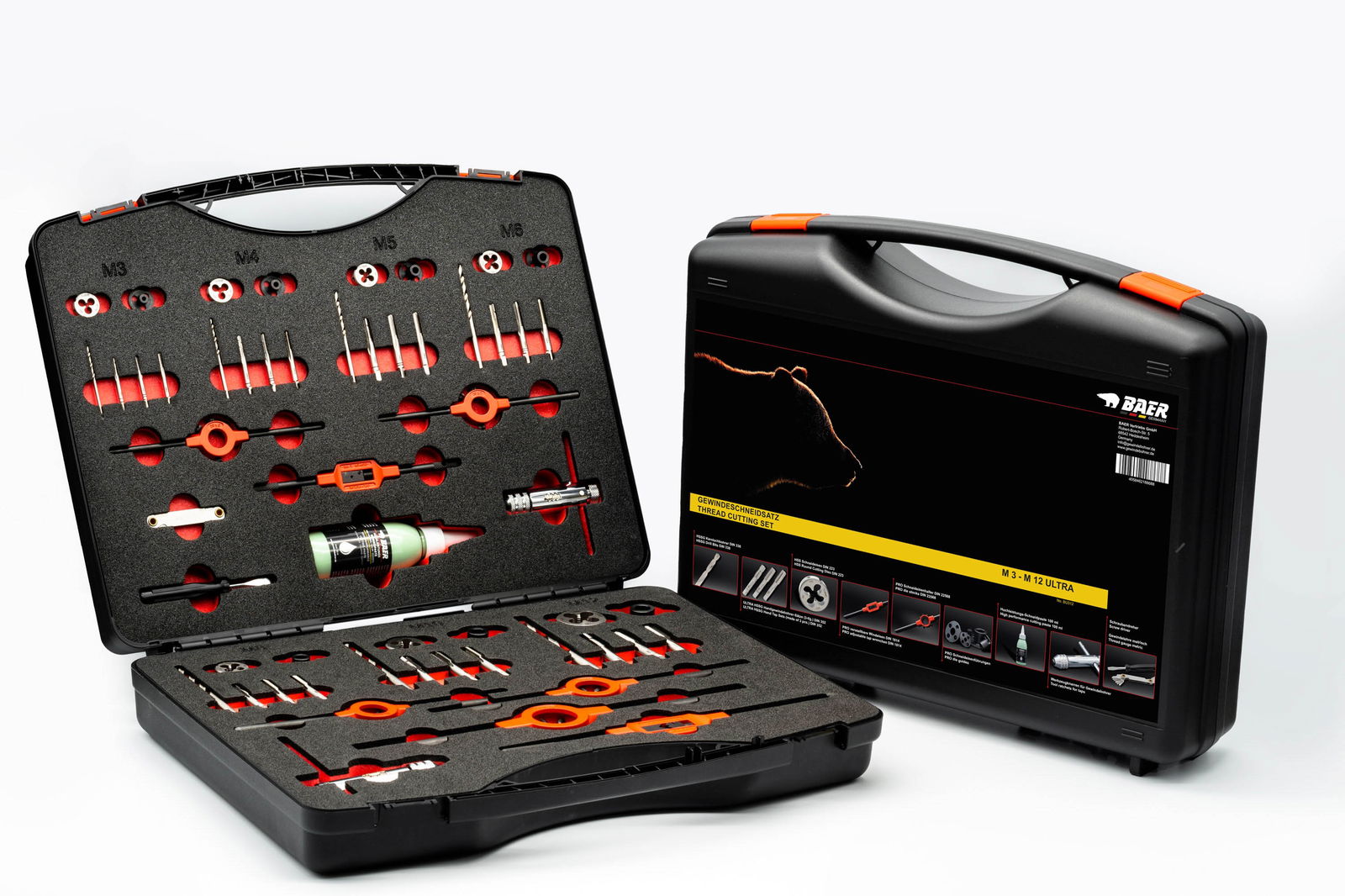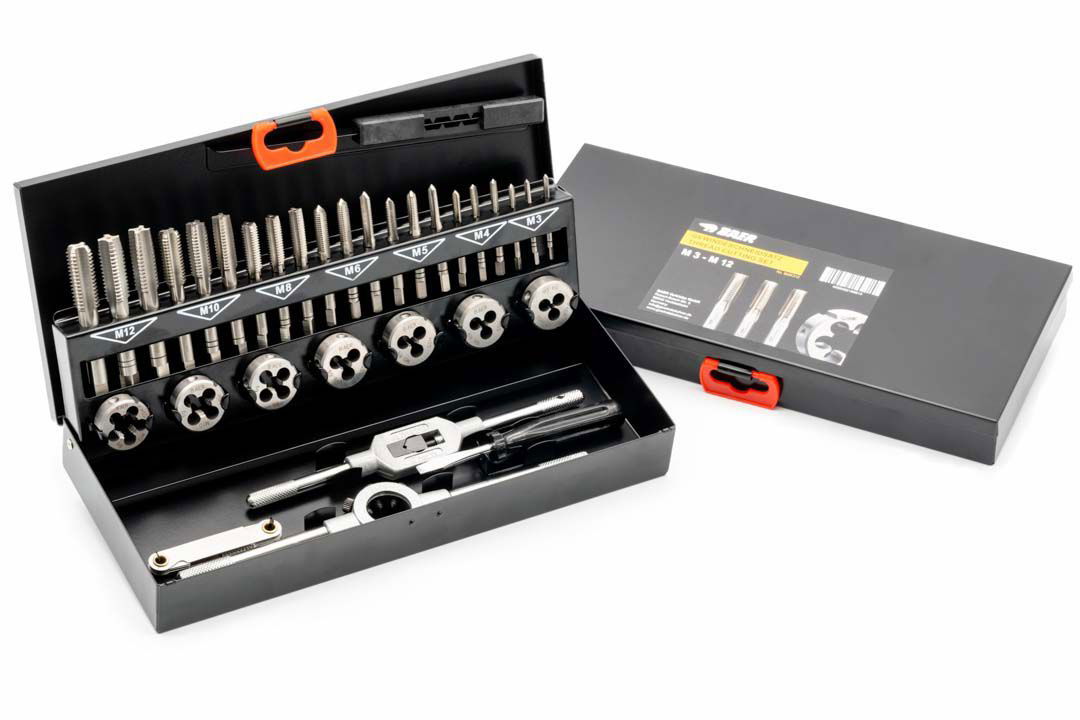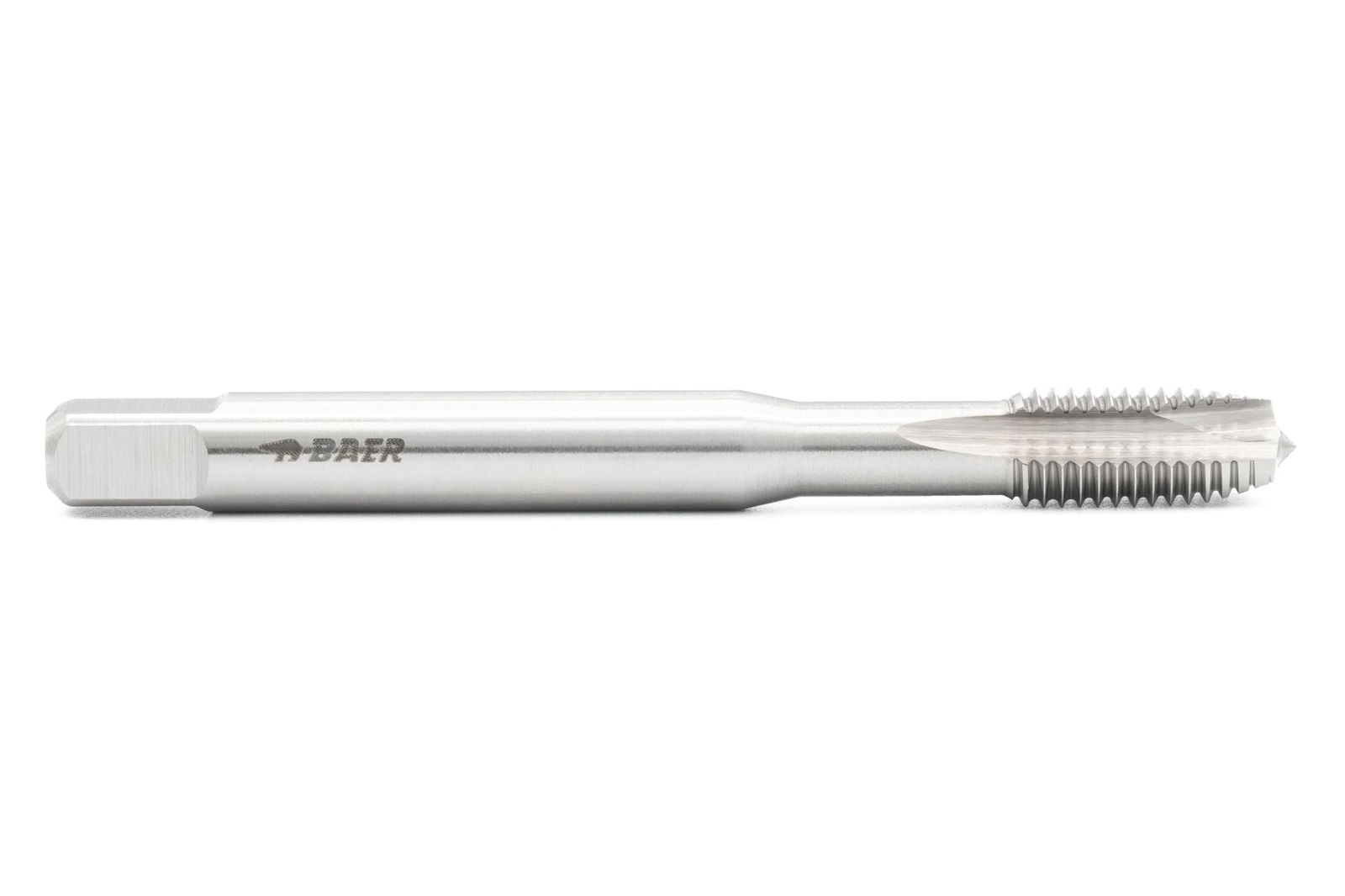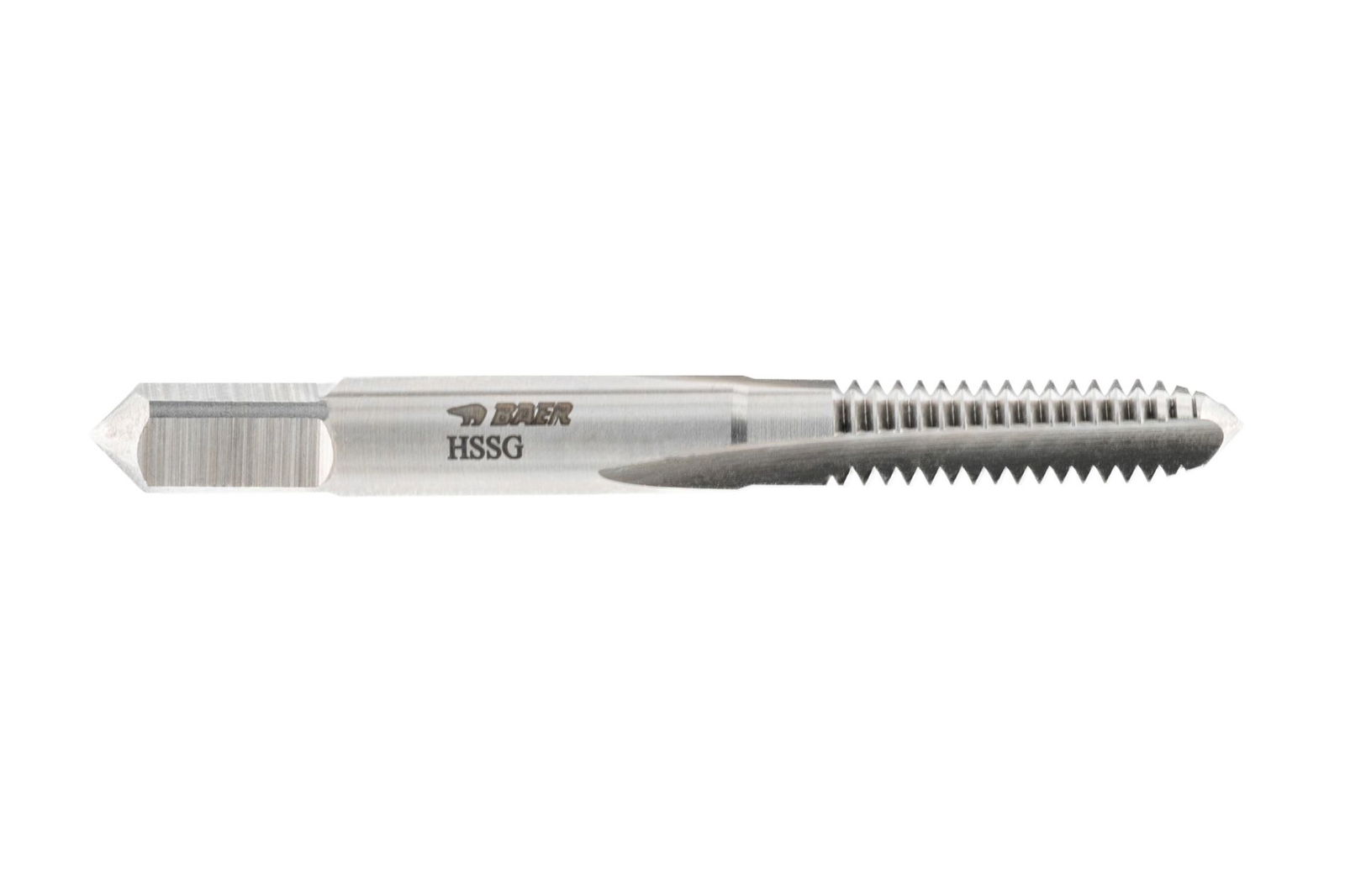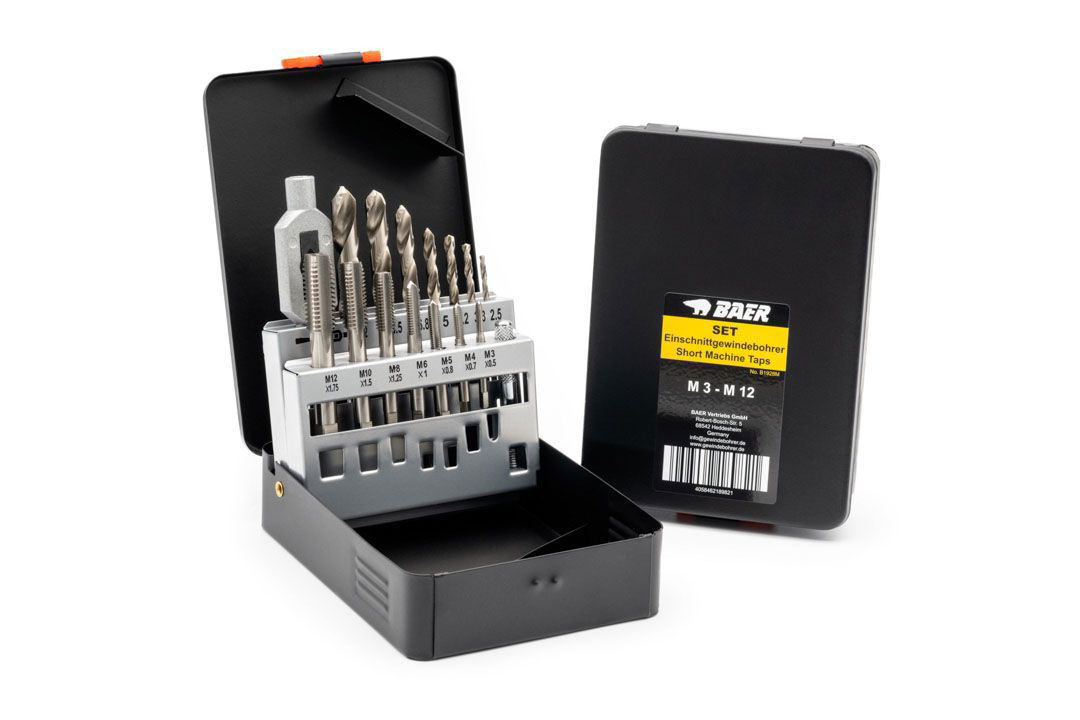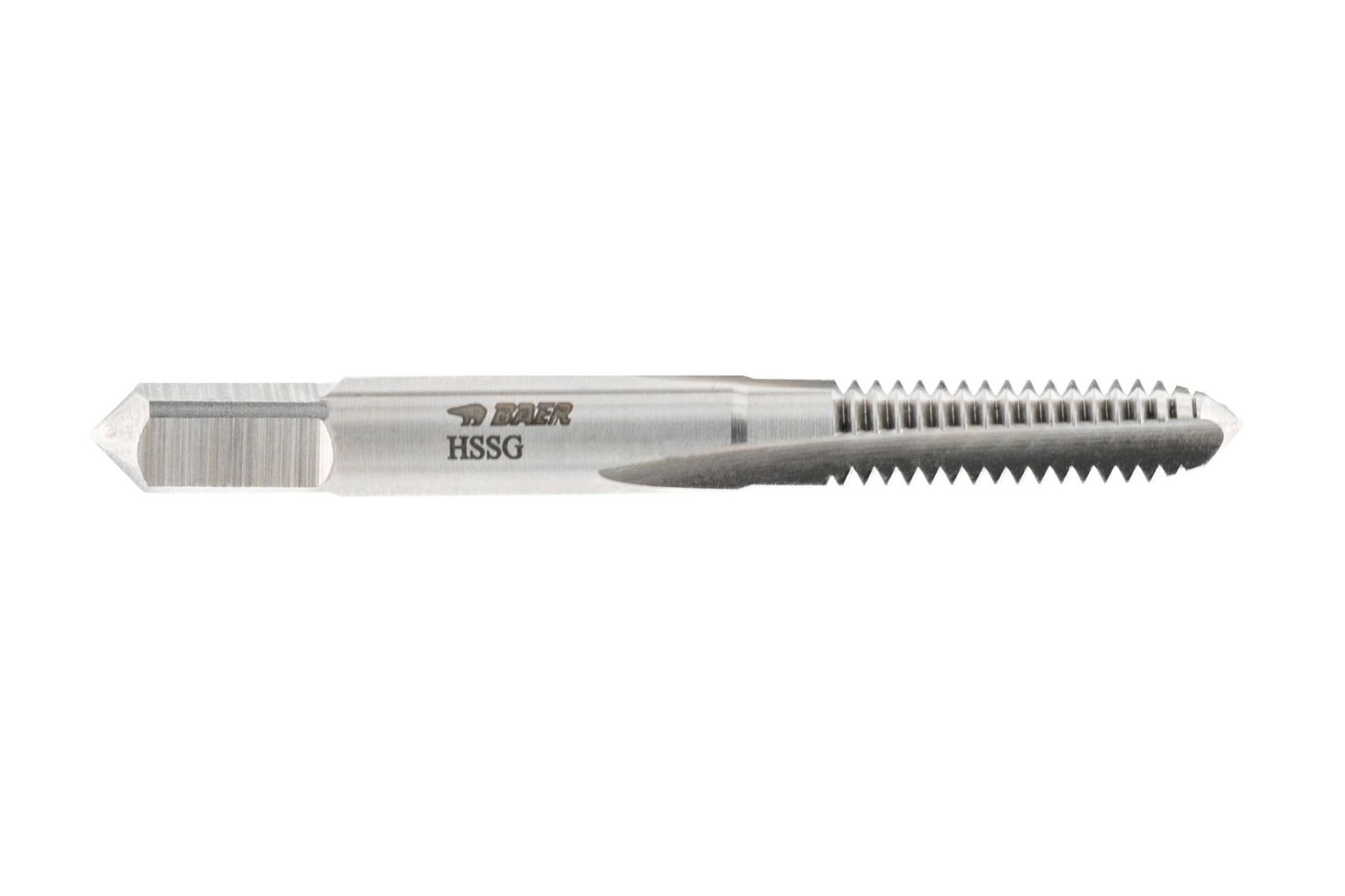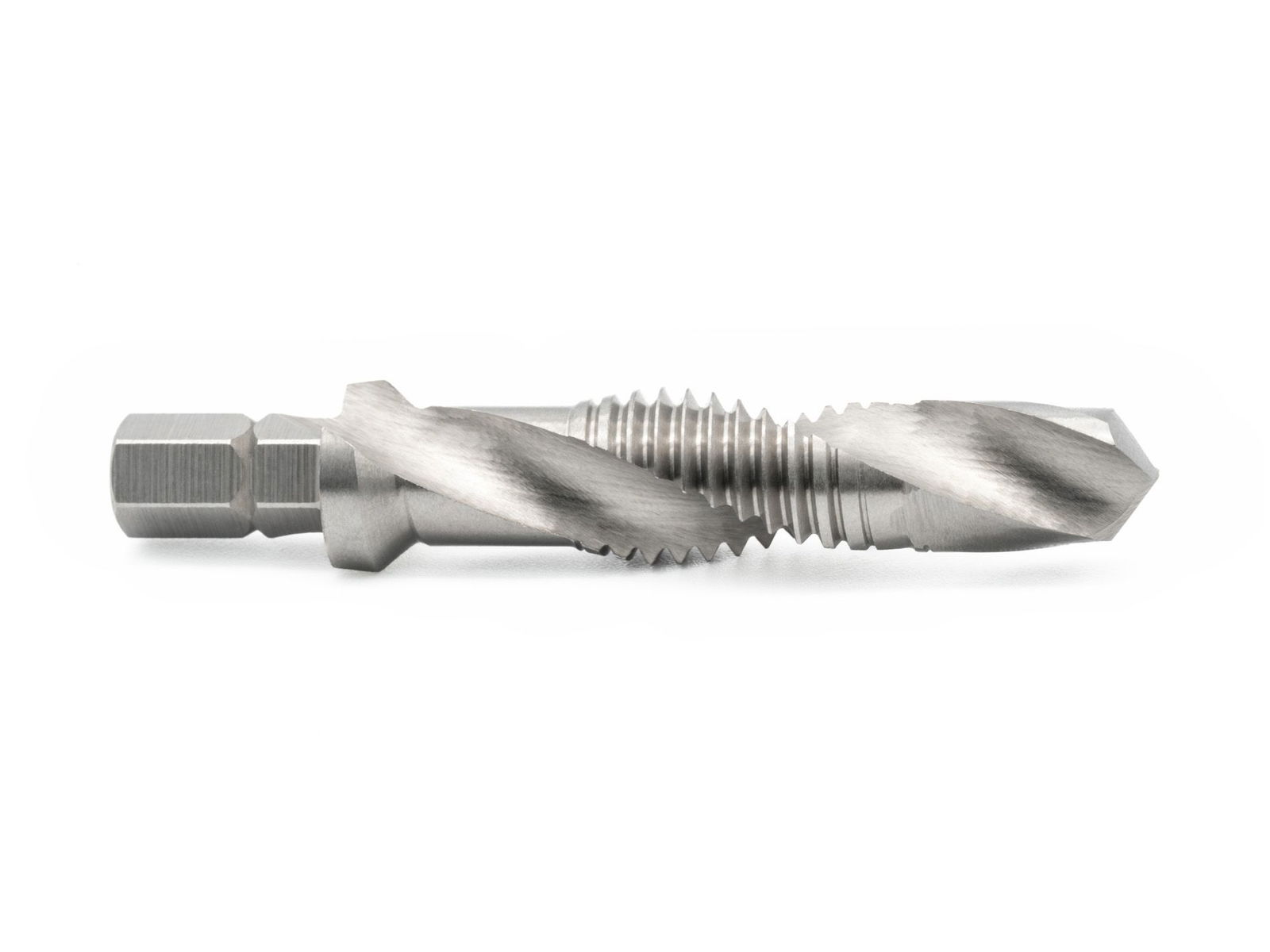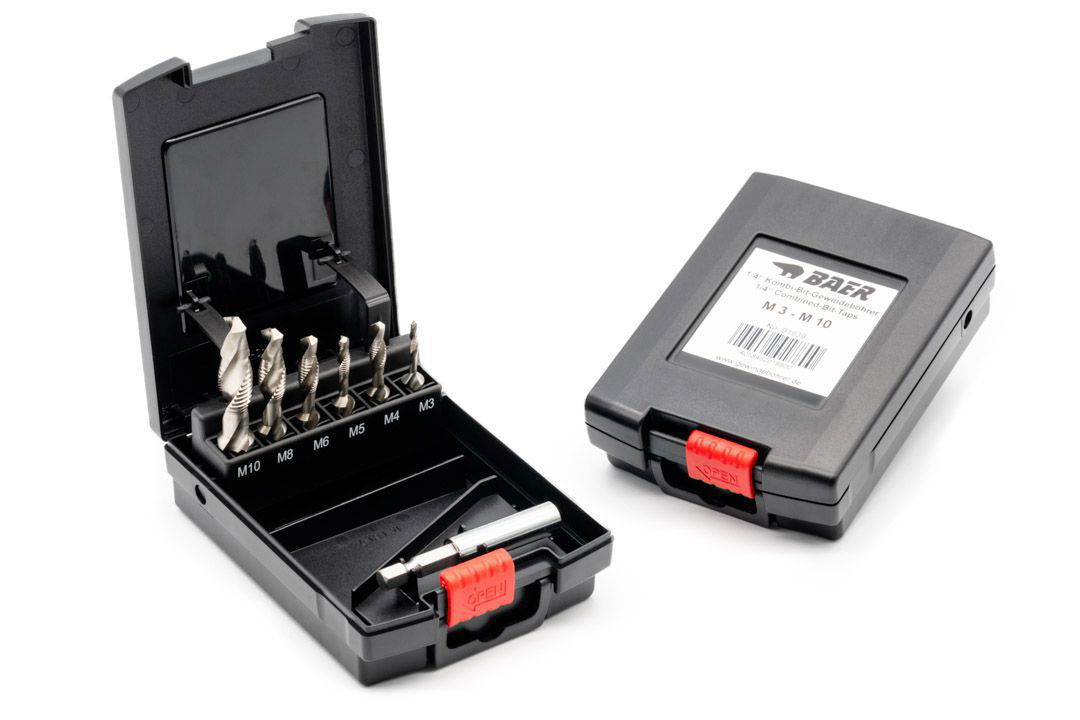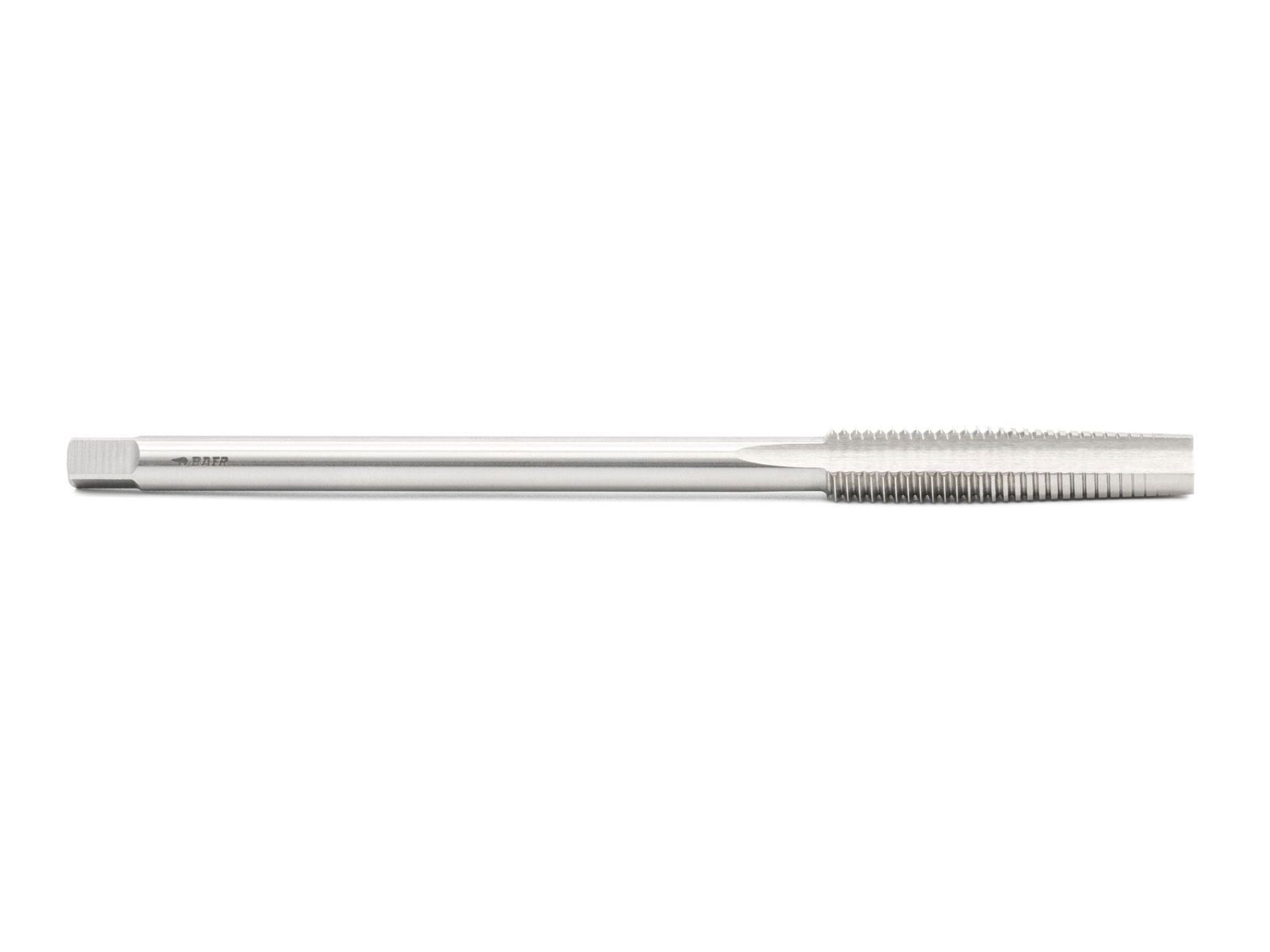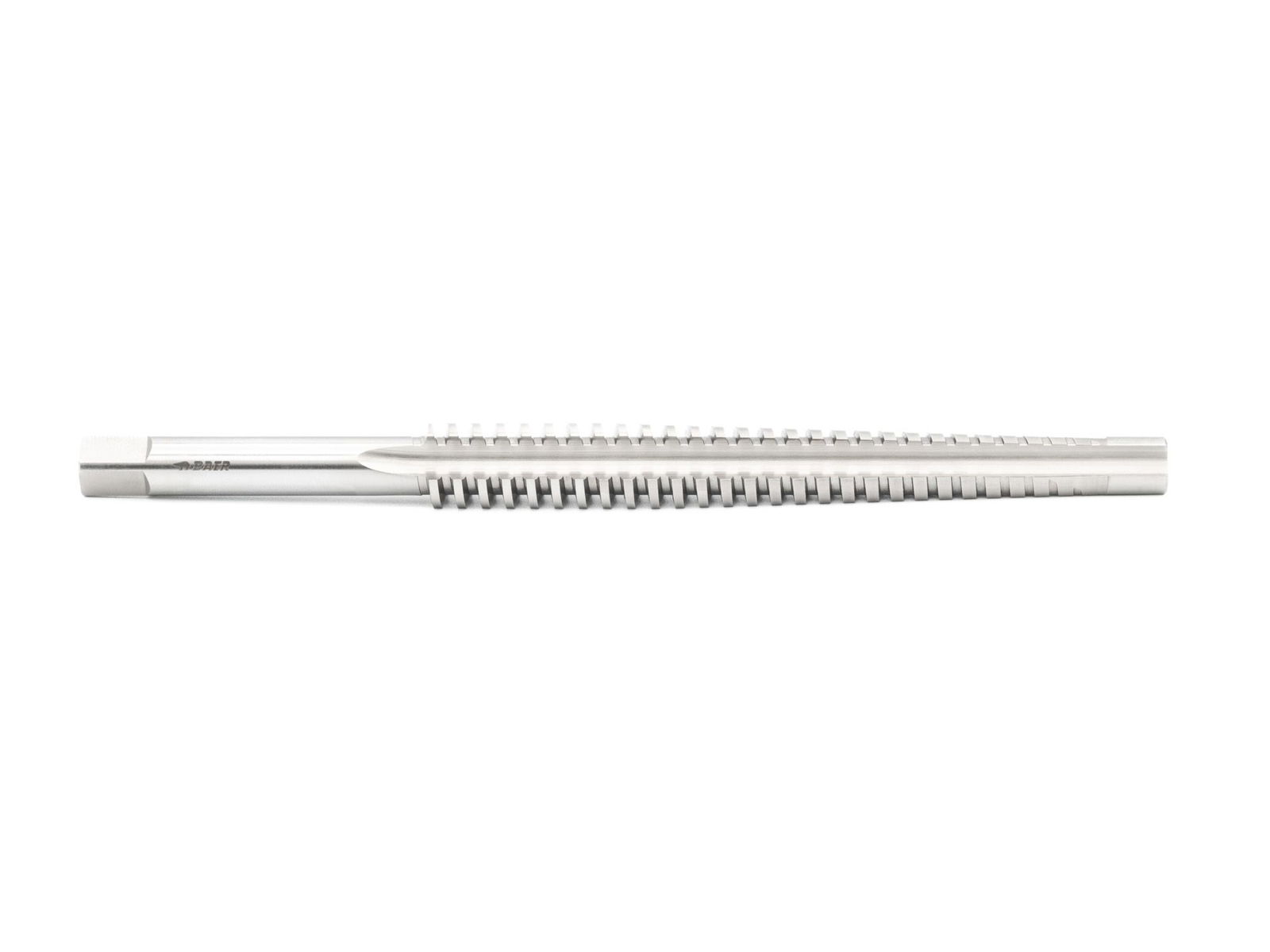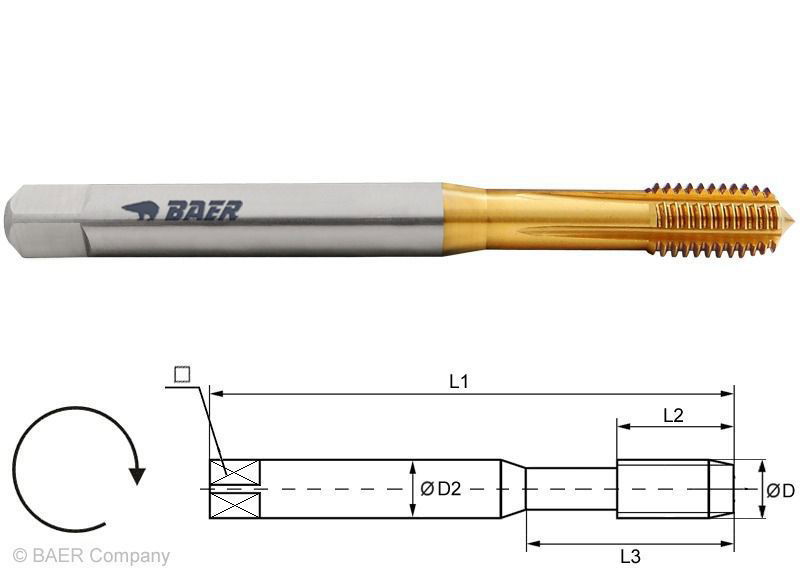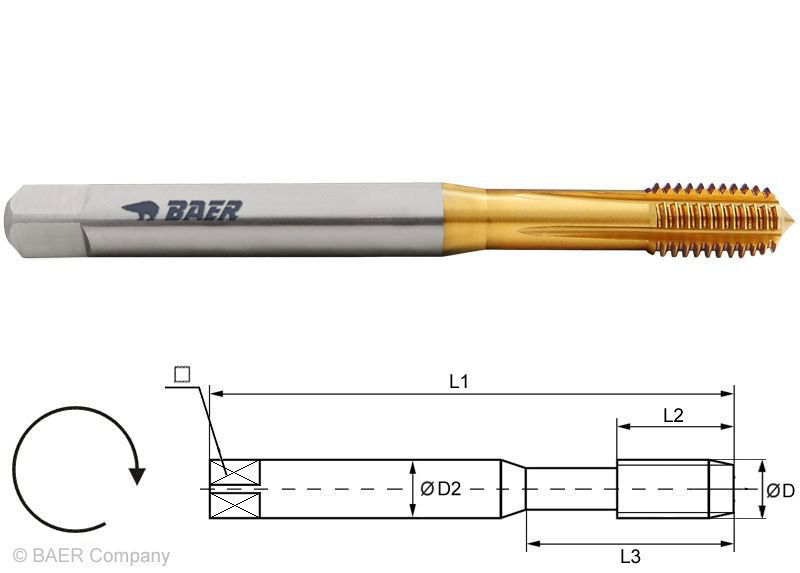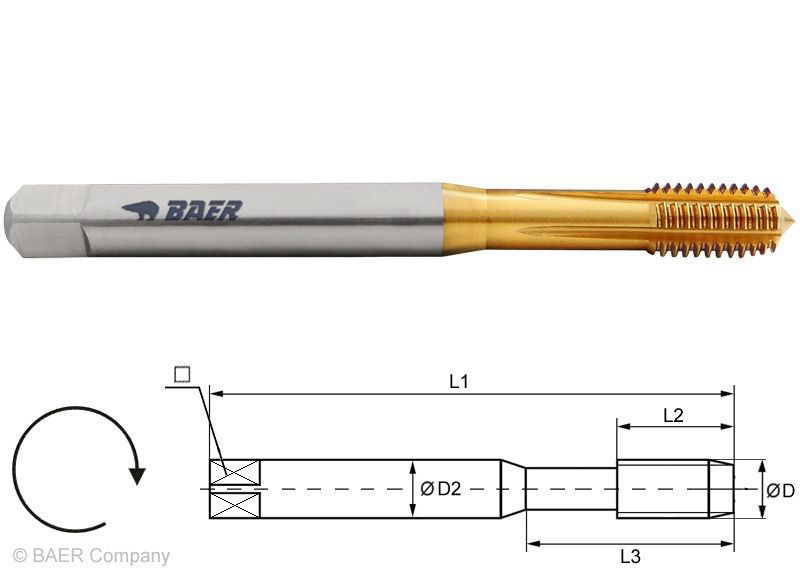M12 or G1/4″: Taps for different thread types
The thread type is the second major factor that influences the selection of a tap. We have summarised the most important
information about the different thread types in this overview.
In Europe, the ISO standard thread according to DIN 13-1 or the ISO fine thread according to DIN 13-2
to 13-11 is usually used for screw connections. For the production of pipe connections, on the other hand, the Whitworth Pipe Thread is used, which you can recognise by the abbreviation G at
. The tables on our site will help you find your way around and select the right
thread size.
From the tip to the shank: This is how a tap is constructed
Even though the cutting cases can be very different, the structure of the tap is always very similar.
Geometries on the tap
Several Dimensions are summarised under this designation, which together result in the thread profile. These include
the nominal dimension, which is usually identical to the largest thread diameter, the thread pitch and the angles on
the cutting surfaces. For metric threads, the pitch is the distance between two thread tips. For
inch threads, this refers to the number of threads per inch.
The thread is not fully formed directly at the head of the tap, but only reaches its final shape after a few
threads. This area is known as the gate. A distinction is made between six
different Tap Chamfer forms from A (long form with 6 to 8 threads) to F (extremely short form with 1 to 1.5 threads).
Groove shapes
The groove shapes are decisive for chip removal, which in turn is influenced by the type of core hole.
Blind holes end in the component, so the chip must be removed backwards against the cutting direction. This
is achieved using right-hand helical flutes. In through holes, the chip can exit the bottom of the hole; here
straight flutes or left-twisted spiral flutes are used.
Shank shapes
A distinction is made between a reinforced shank with a diameter greater than the
nominal diameter of the thread and a stepped shank with a diameter smaller than the nominal dimension. Usually
the end is square, but you will also come across hexagonal shanks on bit taps.
HSS and more: Taps for professionals are made from this material
It is not only the material of the workpiece that is decisive, but also that of the tool. The base material and
post-treatment ensure stable cutting edges, smooth surfaces and smooth
chip removal for all applications.
Material
High-quality threading tools are almost always made from a special steel known as
high-speed steel or HSS for short. The
characteristics of this material can be adapted to the
challenges of thread cutting by varying the proportion of alloying elements. The abbreviation HSSE, for example, indicates a high cobalt content,
which increases hardness, hot hardness and tempering resistance when working with hard metal.
Coatings and Surface treatments
In addition to the base material, coatings and further treatments also offer the possibility of influencing the
characteristics of drills. Such a coating is necessary for certain metals such as aluminium,
in order to facilitate the removal of chips and create a thread that holds the gauge. A suitable
treatment also increases tool life.
Inside or outside? This is the difference between taps and cutting die
Taps are used to cut an internal thread. A cutting die in conjunction with a
tap holder helps you to apply an external thread to a bolt, for example on threaded rods or
screws.
This is how it works: You need to pay attention to this when using a tap
The production of a thread begins with the core hole diameter. It is best to read the correct core hole diameter from
a table or calculate it using the rule of thumb. Then use a core drill to create the required
hole. When creating an external thread with the cutting die, the bolt diameter is of similar importance.
A countersink is useful for countersinking, which makes tapping easier. Cutting oil or another
lubricant should also never be missing when using the tap and cutting die.




